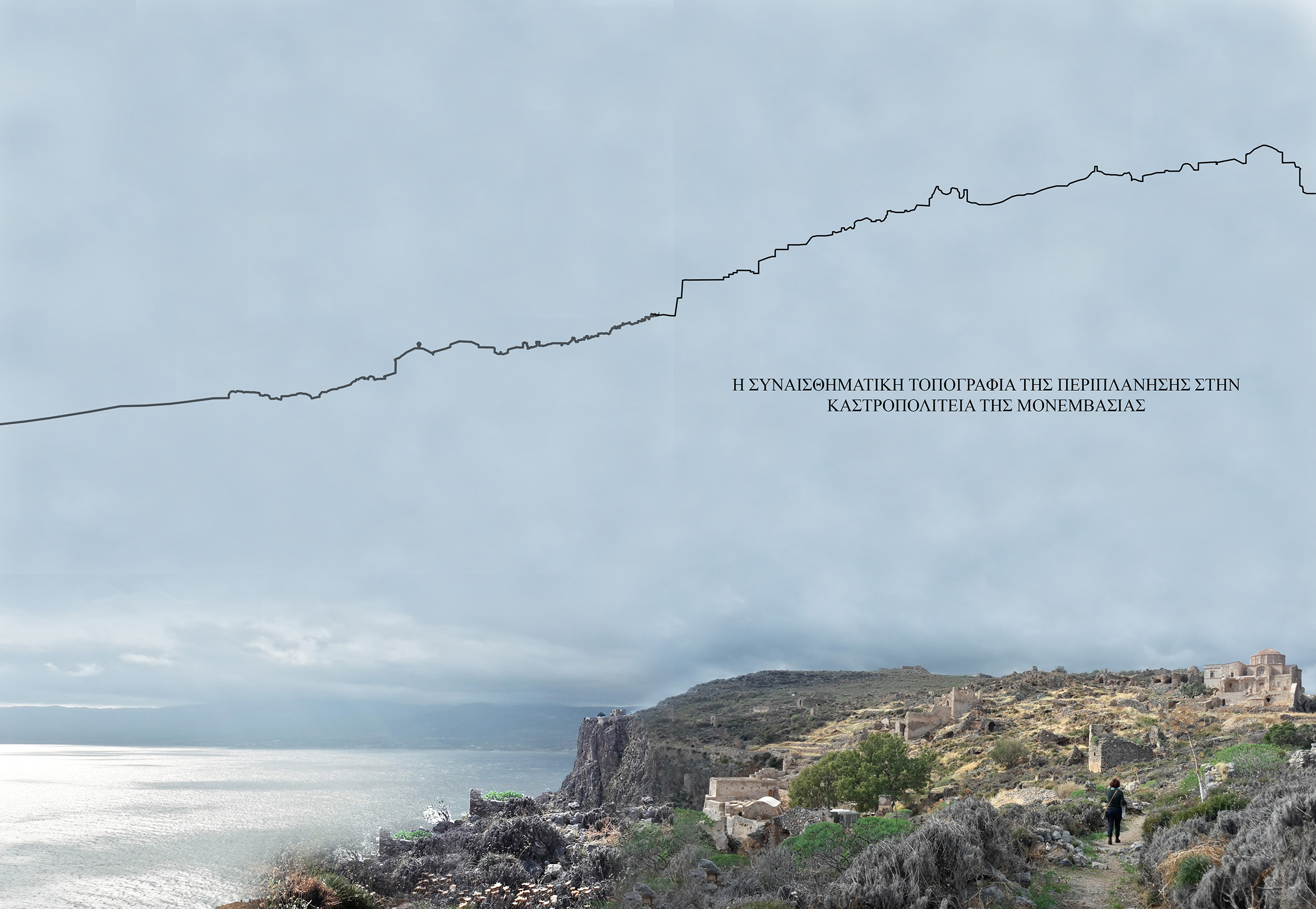The topography of the castle of Monemvasia could not be studied as a self-standing system which is independent from the voyagers who approach it. During its lifetime, the relationship between humans and the landscape is strongly identified, and through it, it has been completed and gains meaning that can be discovered under the notion of wandering in this land.
The historical significance of a monument creates a dense spatial and temporal meaning, a wide range of emotions caused to humans. The essence of tradition is to rediscover every time the meaning that has already been discovered within the horizon of the new era, so that the return attempt can become a force for evolution. to constitute and transform into a field of metaphorical meanings, into a mental space of thought through the cliches of its historiography, which will allow realistic visual contact in the space and stimulate the experiential approach of the city.
The gradual study of the elements that comprise Monemvasia’s rock, in correlation with the research and the historical events which shaped it, revealed the powerful interactive association between man and space, as well as their transformation.
The cognitive image of K. Lynch, utilised as a methodological tool, delimits and organises a subtractive design of resuscitation paths, strengthening the idea of an exterior memorial museum in the upper and lower towns, while proving that the walking experience is undertaking a key role in the spatial perception. Nothing is experienced autonomously, but as a continuum of time and space. The present image of the castle town in the visitor-walker is confused with the memory and meanings it invokes as the experience of the present is shaped. In the landscape of Monemvasia, we are confronted with its structure, which departs from the perceptual horizon of the visitor, so the immediate physical experience is complemented by memory and imagination, according to S. Contaratos.
The paths were designed with an emphasis on connecting the architectural morphological elements of the city that are important to highlight, as the perception receives impetus for identity, recognition of the features that make each element stand out from the rest. The story of the evolution of the city that does not look different and narrates through forms, framing and engraving, are the points of reference that, in conjunction with the movements of the stroller, organize a unique atmosphere.
A man consists of his experiences and he is indissolubly connected to his lands. Wandering in a landscape is about human experience; it causes an intuitive identification of landscape to every wanderer that crosses it. Allowing ourselves to sense the space and hear the palimpsests, will lead to a better perception and understanding of the landscape itself.


